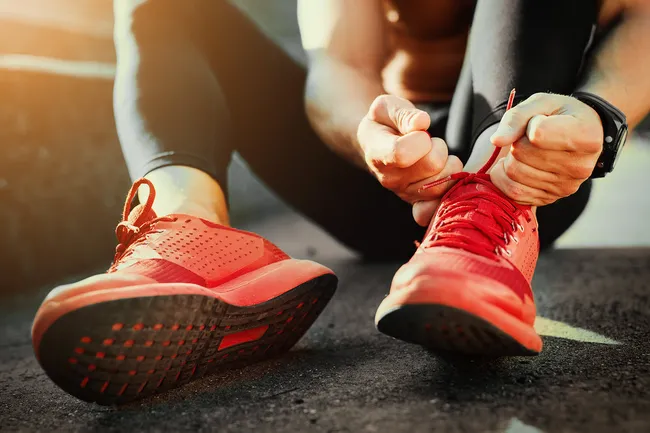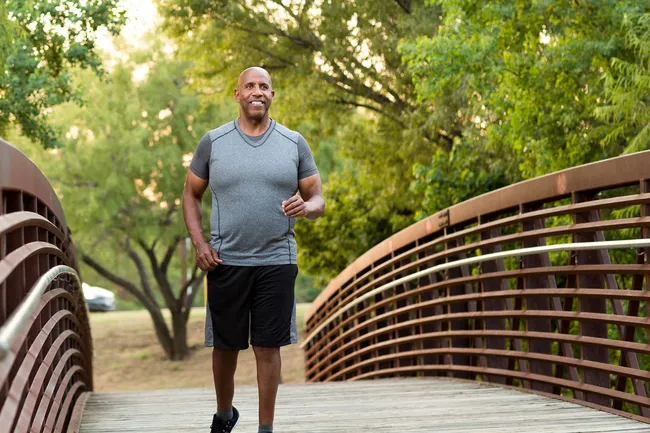13 Walking Missteps to Avoid

1
/
13
The Wrong Shoe
You probably already know that high heels aren’t the best choice. Tennis and basketball shoes also present problems. The stiffness of these court shoes helps support quick sideways movement but hinders the heel-to-toe flexibility that’s good for walking. Look for a shoe with a well-padded heel that’s light, breathable, and water-resistant. A running shoe might work as well as a walk-specific model.
Swipe to advance

2
/
13
Poor Fit
If your shoes are too loose, they won’t provide the support you need. Too tight and they can rub and cause calluses or corns. They should feel comfortable in the store: roomy enough to wiggle your toes with ease but snug enough to keep your foot from sliding around. Shop later in the afternoon when your feet are slightly swollen so you get a good sense of your true size.
Swipe to advance

3
/
13
Stuck in a Rut
You might get bored and lose interest in your walk if you go the same route every day. Change it on a regular basis to keep it interesting. Not only is it good for your mood and motivation, but it also switches things up for your muscles and joints. Look for hills to add to your route. These can add intensity and strengthen thigh, hamstring, and glute muscles.
Swipe to advance

4
/
13
Tuned Out
You may like to escape into your own music or podcast, but it could be unsafe if it’s too loud. If you must listen, look for headphones that let in sounds from the outside, and keep the volume low enough so that you can hear what’s going on around you: a speeding bus, a honking car, a barking dog, an ambulance siren.
Swipe to advance

5
/
13
Staring at Your Screen
Gaze at your phone while walking and you could be headed for trouble. You might trip or even step into traffic. It happens a lot. Pedestrian injuries linked to phones has more than doubled since 2004, and most walkers -- 60% -- are distracted by their phones or something else. Stop, get out of the way, and finish your business before walking again.
Swipe to advance

6
/
13
Doggone Lonely
Don’t leave Fido at home. He’ll be thrilled to join you on your stroll about the neighborhood. And that enthusiasm might just rub off. It turns out that people who have dogs and take them for regular walks are more likely to hit 150 minutes a week of moderate exercise, which is the least that experts recommend for good health.
Swipe to advance

7
/
13
Wardrobe Malfunction
Clothes that are too tight and heavy could make your walk unpleasant. They should be loose, comfortable, and breathable so you can move easily and they won’t get wet from sweat or humidity. You can remove thin layers as you get warmer and add them back when you’re cold. Take rain gear if the weather looks iffy, and don’t forget hats, sunglasses, and sunscreen to protect you from the sun (even on cloudy days or in winter).
Swipe to advance

8
/
13
Losing Count
Counting steps or miles or kilometers or minutes is important. That way, you know whether you’re meeting your exercise goals. It also could help motivate you. People who tracked steps took around 27% more of them than those who didn’t in one group of studies. That added up to an average of 2,500 steps a day. You can track yours with an app on your phone or with an inexpensive device called a pedometer.
Swipe to advance

9
/
13
Out of Touch
As long as you don't get distracted by it, your phone is a plus. So don’t leave it at home. You can use it to find a map if you’re lost or to call someone in case of emergency. And it can be a useful way to track your distance and location. Just remember to charge it up before you go.
Swipe to advance

10
/
13
Slumped Stance
You might have a hunched posture from sitting at a computer all day. But don’t bring it on your walk! The right walking posture can help you walk faster and longer and help prevent injury. Try to lift your spine as if there were a string pulling you up from the top of your head. Your eyes should be forward, your shoulders down, back, and relaxed. Swing your arms naturally and freely as you step your feet lightly from heel to toe.
Swipe to advance

11
/
13
Can't Be Seen
Bright colors and reflective fabrics will help drivers and others see you if you like to walk in the evening or early morning when it’s dark. You can also bring a light to help you see where you’re going and to make yourself even more visible. It’s easiest for others to see you when the reflectors or lights are on parts of your body that are moving, like your arms or legs.
Swipe to advance

12
/
13
The Wrong Drinks
Were you going to treat yourself to a soda on your walk? You'll get too much sugar and more calories that you want. How about a sports drink? You probably don't need extra electrolytes if you're only going for a moderate walk. The best way to stay hydrated when you walk is with water. Reward yourself with something else that's good for you, like spending time talking with a friend.
Swipe to advance

13
/
13
Not Stretching Afterward
Give your leg muscles -- especially your calves -- a gentle stretch when you're done with your walk. It will help you stay flexible. Don't overdo it -- stretches shouldn't hurt -- and don't bounce. Hold each stretch for 10-20 seconds. Use a chair or a wall for help with your balance.
Swipe to advance
- Get link
- X
- Other Apps